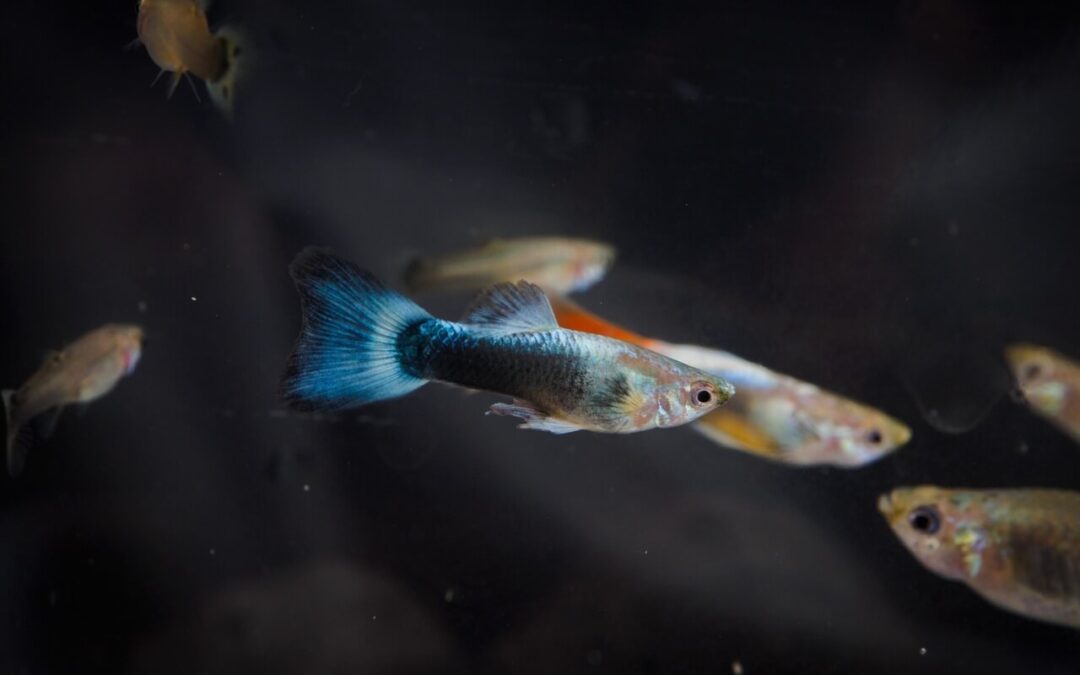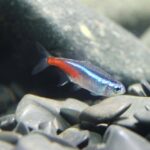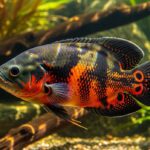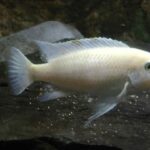Guppies are one of the most popular freshwater aquarium fish in the world—and for good reason. They’re colorful, hardy, and full of life, making them a great choice for both beginners and experienced fish keepers. But even though guppies are relatively easy to care for, there’s one factor that plays a huge role in their health and happiness: water temperature.
Like all fish, guppies are ectothermic, which means they rely on their environment to regulate body functions. If the water is too cold, they become sluggish and vulnerable to disease. If it’s too warm, they might become overly active, stressed, and live shorter lives. Getting this balance right is key to keeping your guppies thriving for years.
In this guide, we’ll explore the optimal temperature range for guppies, why it matters so much, and how you can keep your tank at the right level every day.
The Perfect Temperature Range for Guppies
The consensus among aquarists and scientific sources (including Google’s AI Overview) is that guppies thrive in water temperatures between 72 and 82°F (22–28°C).
This range is considered the “golden zone.” It’s not just about survival—within this range, guppies grow well, breed successfully, and display vibrant colors. But what’s interesting is how different points within that range can affect them:
- 72–74°F (22–23°C): Slower metabolism, calmer behavior, longer lifespan, but breeding slows down.
- 75–78°F (24–25°C): A balanced range—guppies are active, healthy, and breed at a sustainable pace.
- 79–82°F (26–28°C): High activity and rapid breeding, but with the tradeoff of a shorter lifespan and lower oxygen levels in the water.
Think of it like speed: colder water makes them move through life in slow motion, while hotter water makes them hit the fast-forward button.
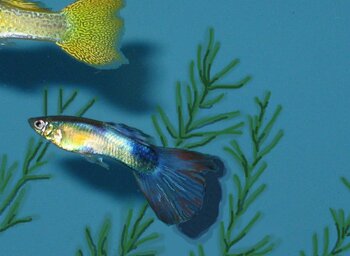
Why the Right Temperature Matters
Keeping your guppies at the correct temperature isn’t just about comfort. It directly affects their health, growth, and behavior. Here’s how:
1. It Shapes Their Health and Immunity
A steady temperature within the safe range helps guppies maintain a strong immune system. Fluctuating or cold water stresses their bodies, making them susceptible to fin rot, ich, and other common fish diseases.
2. It Impacts Growth and Breeding
Warm water accelerates breeding. Female guppies may give birth more often, and fry (baby guppies) develop faster. However, it comes with a catch—fish that grow too quickly often don’t live as long. Cooler water slows things down, but it promotes longevity.
3. Activity and Stress
Cooler water slows their activity levels. While they might seem calmer, prolonged exposure to low temperatures can cause stress and leave them vulnerable to infections.
4. It Controls Oxygen Availability
One detail many beginners overlook is oxygen. Warmer water holds less oxygen, which can make guppies gasp near the surface. That’s why tanks at the higher end of the temperature range need extra aeration.
5. It Affects Behavior and Energy
Ever noticed your guppies darting around more in warmer water? That’s their metabolism speeding up. On the flip side, cooler water makes them sluggish, almost as if they’re conserving energy.
What Happens If the Temperature Is Too Low?
If guppies are kept in water below 72°F (22°C), you may notice:
- Sluggish swimming and less interaction
- Weakened immune system leading to frequent illness
- Reduced appetite or refusal to eat
- Poor breeding success or no breeding at all
Long-term exposure to low temperatures can even lead to death. If your tank is unheated and room temperature drops below the recommended range, your guppies will struggle.
What Happens If the Temperature Is Too High?
On the flip side, keeping guppies in water consistently above 82°F (28°C) also causes problems:
- Excessive stress, leading to disease
- Low oxygen levels, making it hard for them to breathe
- Shortened lifespan due to an overworked metabolism
- Overbreeding, which can lead to overcrowding in your tank
While guppies can survive short periods in warmer water, it’s not a healthy long-term environment.
Interesting Facts About Guppies and Temperature
To make things more fascinating, let’s look at some lesser-known facts:
- Wild guppies vs. aquarium guppies
Wild guppies live in streams and ponds across South America, where temperatures naturally fluctuate. However, aquarium guppies—especially fancy strains—have been selectively bred for decades and are less tolerant of big swings. - Temperature affects color vibrancy
Warmer water can make guppy colors look brighter because of increased metabolism and activity. But if it’s too hot, stress may dull their colors instead. - Breeding and temperature links
Warmer water not only speeds up breeding but can also influence the survival rate of fry. Fry in cooler water often grow more slowly but are stronger in the long run. - Nighttime temperature drops
Some aquarists mimic nature by allowing a small drop at night (1–2°F). This can be beneficial and reduce stress, as long as it’s gradual. - Temperature and tank mates
If you’re keeping guppies with other species (like neon tetras or corydoras), you’ll need a temperature that works for all of them. Luckily, many common community fish share the same range.
Tips for Maintaining the Right Water Temperature
The good news is, with the right setup, it’s easy to keep your guppy tank at the perfect temperature. Here are some practical tips:
1. Use a Reliable Heater
An aquarium heater with a built-in thermostat is essential. It automatically adjusts to keep the water stable, preventing dangerous fluctuations.
2. Monitor with a Thermometer
Don’t just rely on the heater. Place a thermometer inside the tank so you can check the temperature daily. Digital ones are usually more accurate.
3. Avoid Fluctuations & Match Temperature During Water Changes
When doing water changes, make sure the new water matches the tank temperature. Adding water that’s several degrees colder or hotter can shock guppies instantly.
4. Proper Tank Placement
Position your tank away from:
- Direct sunlight (which can overheat it)
- Drafts from windows or doors
- Air conditioning vents or heaters
5. Consider Tank Size
Larger tanks maintain temperature more consistently. Small tanks heat up and cool down faster, which can be risky for guppies.
6. Use an Air Pump or Plants for Oxygen
If your tank runs warm, make sure oxygen levels stay high. An air pump or live plants can improve oxygen circulation.
Seasonal Considerations
Depending on where you live, seasonal changes can affect your guppy tank.
- Winter: In cooler climates, an aquarium heater is absolutely necessary. Even indoor temperatures may drop too low for guppies.
- Summer: Be careful of overheating tanks, especially in rooms without air conditioning. Consider fans or cooling systems if needed.
Breeding Guppies and Temperature
If you plan to breed guppies, temperature plays an important role.
- Warmer temperatures (78–82°F): Increase breeding frequency but shorten the lifespan of the fish.
- Moderate temperatures (74–76°F): Balance healthy breeding without too much stress.
If your main goal is a healthy, long-lived guppy colony, aim for the mid-range (74–78°F). If you’re actively breeding, you may temporarily raise the temperature but always monitor carefully.
Best Practices for Long-Term Health
Here are some aquarist-approved tips for success:
- Keep guppies at a mid-range temperature (74–78°F) for a balance of health, activity, and lifespan.
- Place your tank away from direct sunlight and drafts.
- Always use a reliable backup thermometer—don’t rely on just the heater’s setting.
- Remember that bigger tanks are easier to keep stable than smaller ones.
Common Mistakes to Avoid
Many new guppy keepers run into problems with temperature control. Here are mistakes to watch out for:
- Relying on room temperature alone – Indoor air fluctuates too much for guppies.
- Using cheap heaters – They often fail, overheat, or don’t regulate properly.
- Placing the tank near windows – Sunlight causes big temperature swings.
- Ignoring temperature checks – A thermometer is just as important as the heater.
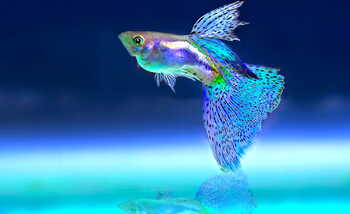
Frequently Asked Questions (FAQs)
1. Do guppies need a heater?
Yes. Unless you live in a consistently warm tropical climate where the water never drops below 72°F, guppies need a heater to stay healthy.
2. Can guppies survive in cold water?
Guppies might survive for a short time in colder water, but it weakens their immune systems and drastically increases the risk of illness.
3. What temperature is too cold for guppies?
Anything below 70°F (21°C) is too cold. At this point, they become sluggish, stop breeding, and may eventually die.
4. What temperature is too hot for guppies?
Consistently above 82°F (28°C) is too hot. While they may tolerate it briefly, it reduces oxygen, stresses the fish, and shortens their lifespan.
5. What temperature is best for breeding guppies?
The upper range (78–82°F) encourages faster breeding, but this comes at the cost of shorter lifespans. A safer long-term temperature is around 74–78°F.
6. How do I cool down a guppy tank in summer?
You can use a small aquarium fan, float ice packs (sealed in bags) in the water, or reduce room temperature with AC. Always avoid sudden changes.
7. Can guppies live without a heater if my house is warm?
If your home is consistently 72–82°F with no major fluctuations, guppies may survive without a heater. But in most cases, a heater is still recommended for stability.
Final Thoughts
Maintaining the right water temperature for guppy fish—between 72 and 82°F (22–28°C)—is one of the most important steps in keeping them healthy. A heater and thermometer are your best tools for providing stability, while careful tank placement and monitoring help avoid dangerous fluctuations.
Remember:
- Too cold? Your guppies become sluggish and vulnerable.
- Too hot? They may breed more but live shorter, stressed lives.
- Just right? You’ll enjoy active, colorful guppies for years.
What matters most is stability. Guppies can adapt to many conditions, but sudden changes can stress them out or even be deadly. With a good heater, a thermometer, and some basic precautions, you’ll give your guppies a safe and stable home where they can truly thrive.
So next time you glance at your aquarium and see those tiny flashes of color darting around, remember: it’s not just the decorations or food that keep them happy—it’s the invisible comfort of perfectly balanced water.

